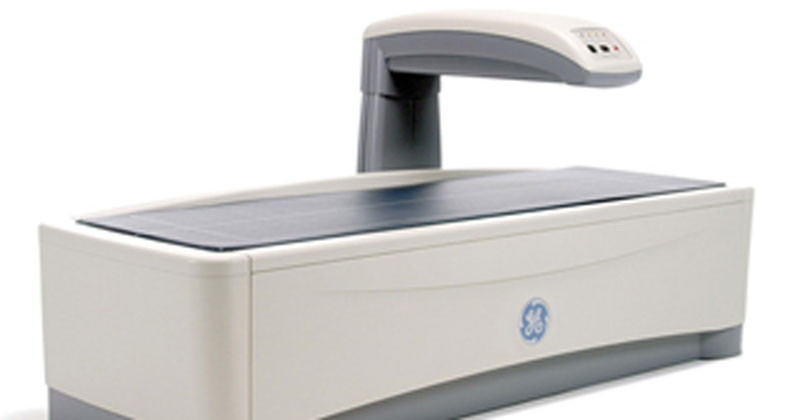If you've ever wondered what a rheumatologist does, Consultant Rheumatologist Stephanie Kaye-Barrett explains which disorders she treats, and how she can help people find solutions to musculoskeletal pain.

What does a rheumatologist do?
Rheumatologists deal with disorders and pain affecting the musculoskeletal system. We're interested in bones, joints and muscles in relation to arthritis and osteoporosis. There are over 200 conditions which rheumatologists treat. For example, there are several categories of arthritis: inflammatory arthritis, which includes rheumatoid arthritis and connective tissue diseases like systemic lupus erythematosus (SLE); degenerative arthritis, such as osteoarthritis. Then there is gout, which is a critical arthritis that causes acutely inflamed joints. All forms of arthritis can give the sufferer debilitating pain. Treating osteoporosis is also a big part of a rheumatologist’s job. I decided to specialise in rheumatology because it offers so much variety — it encompasses a very wide field and you have a lot of clinical conundrums to solve. You are like a detective trying to find out where the pain is coming from, how it originated and how to treat it.
What is the difference between a rheumatologist and an orthopaedic surgeon?
Rheumatologists treat joint disorders that can be treated medically, without the need for surgery. Orthopaedic surgeons specialise in surgical treatments and in the management of fractures. There are a lot of people, including some in the medical world, who think that any joint pain should be referred to an orthopaedic surgeon. This leads to people with joint pain being sent to orthopaedics specialists by their GP or hospital admissions teams, and when this is not appropriate, you can go around in circles before finally seeing a rheumatologist. If we see people early, we can say if they need to see an orthopaedic surgeon, or whether they can treated with medication by us. If a person with a foot swollen because of gout is initially sent to orthopaedics, it could be a long time before they see a rheumatologist, and for all this time they can be in real pain. Rheumatologists can make such a huge and positive difference to so many people.
Are there new treatments available to patients suffering from joint pain?
There has been vast progress made in recent years – for example the treatment for rheumatoid arthritis has transformed. Treatments that have been around for 50 years have been supplanted by new drugs called biological agents or anti-TNF drugs. These are injectable treatments which put the condition into remission. We no longer have to tell young people that they will have to take a cocktail of miserable drugs for years, which will not actually be all that effective. We can now give them a good chance of getting back to work and forgetting about their disease—other than occasional check-ups, and injections that they can self-administer— allowing them to live a normal life. And the great thing is the drugs are getting better all the time. They’re becoming easier to administer, more effective and longer lasting. Things in the field are moving very fast — faster than most other specialities, which makes it very exciting.

What about new treatments for osteoporosis?
A lot of people think we can’t treat osteoporosis – a condition which occurs when bones thin and become fragile and brittle - but it’s another area in which huge strides have been made. It is now possible to diagnose and treat people before they suffer a fracture, but it requires people to be proactive, and get screened using a DXA scanner. Anyone in the ‘at risk’ group – this includes women over 50, or people who have suffered an eating disorder – should think about getting a scan. Once we know someone’s at risk, we have drugs designed to prevent fractures and increase bone density. You can build up your bone density and track it on graphs using scans. The scans can tell you where you are on the scale for osteopenia — low bone density which has not yet developed into full blown osteoporosis. They can tell us whether a person can improve things by taking preventative action or whether they will need to undergo treatment. It is vital to do this preemptively because it can make a real difference to the patient’s future quality of life.
A condition in which the protein and mineral content of bone tissue is reduced, but less severely than in osteoporosis.
Full medical glossaryRheumatologists also treat gout. Isn’t that caused by over-indulgence?
There are a lot of misconceptions about gout. There is a stigma attached to the condition so people can feel embarrassed about seeking help, and continue to suffer unnecessarily — which is unfortunate, because the treatments we now have are excellent. People think that gout is an amusing, old fashioned ailment based on drinking too much port. In fact, a condition which is often inherited, and can be very serious. It occurs when a normally harmless chemical called urate builds up in the system and forms tiny crystals in joints, causing inflammation and severe pain. While patients can modify their behaviour to avoid it, certain genes do increase the likelihood of developing the condition. It’s really important patients do seek treatment. Apart from the fact there are really effective drugs for the condition, there is a clear link between gout and cardiovascular disease if the gout is left untreated for a long time, so it's very sensible to get help.
What do you think the next breakthrough in rheumatology will be?
Unfortunately, we still don’t know what causes osteoarthritis – this condition occurs when some of the cartilage covering the ends of the bones roughens and becomes thin, and the bone thickens, as if your body is trying to repair the damage. Some joints will inevitably suffer wear and tear through use over time, but the hands can get a form of osteoarthritis which isn’t related to overuse, and it can lead to a level of deformity which stops sufferers performing everyday functions. We are actively researching it at the moment. I think it’s going to be the next breakthrough area. We know that there appears to be an immune reaction that degrades the cartilage— the surface of the joint—but we don’t know what triggers this reaction. But hopefully, we’ll have good news soon. After all, we’ve come so far in many other areas of rheumatology. When I first qualified I would hear consultants tell people that there was very little that could be done, and that there was a chance they could end up in a wheelchair. Now I can send patients on their way with treatments that mean they can lead a normal, pain-free life for the foreseeable future.








